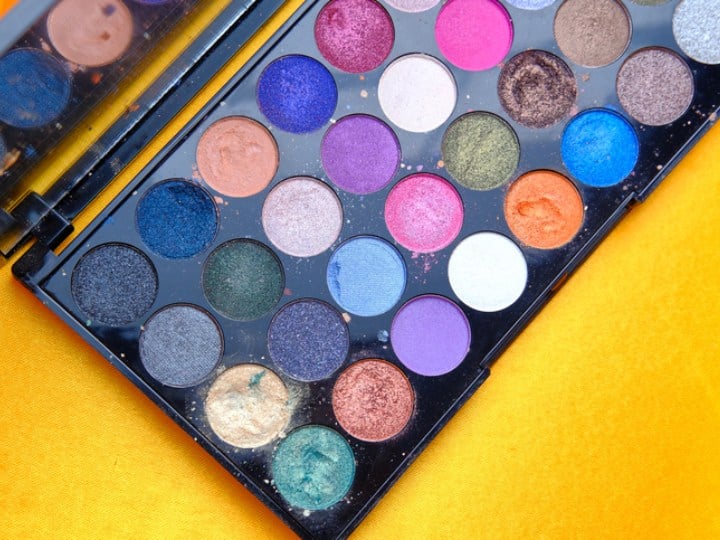Characterisation of Nanotechnology in Cosmetics
Innovative analysis services for nanoparticle in cosmetics or nanotechnology in beauty products supporting novel cosmetic development
Nanotechnology in beauty products has emerged as a revolutionary force, transforming the landscape of cosmetic product development. Nanomaterials in cosmetics have one or more external dimensions, or internal structure, in the range of 1 nm to 100 nm. They have opened up new avenues for innovation and product efficacy. From enhancing formulation stability to improving delivery systems, the applications of nanotechnology in cosmetics are vast and promising. However, with innovation comes responsibility, particularly in meeting stringent regulatory requirements to ensure consumer safety.
Compliance with Regulatory Requirements
Various regulatory authorities worldwide have recognized the significance of cosmetic nanoparticles and have implemented guidelines to ensure their safe usage. Complying with regulatory requirements is paramount for cosmetics manufacturers and importers dealing with the application of nanotechnology in cosmetics. For instance, the US FDA has issued guidance regarding the safety of nanomaterials in cosmetic products, emphasizing the importance of proper notification and assessment.
Similarly, in the European Union (EU), manufacturers and importers are mandated to register cosmetic products containing nanomaterials on the cosmetic products notification portal. Compliance with EU Regulation (EC) No 1223/2009 requires thorough identification of nanomaterials present in products and assessment of foreseeable exposure conditions. Furthermore, certain nanomaterials, such as UV-filters, must be authorised by the European Commission before their use in cosmetic products. Authorisation entails a thorough review of toxicological data by the SCCS, ensuring the safety of consumers. In line with regulatory guidelines, nanotechnology used in cosmetics must be clearly labeled in the list of ingredients, with the term 'nano' in brackets following the substance's name. Transparent labeling enhances consumer awareness and promotes informed decision-making regarding product usage.
Testing and Safety Assurance
As the demand for nanotechnology in cosmetics grows, so does the need for rigorous testing and safety assurance measures. Cosmetic manufacturers and importers must be prepared to demonstrate understanding and identify nanotechnology in their products and assess potential risks associated with their usage.
Nanoparticle Cosmetics Characterisation
Our team of expert scientists and consultants specialise in testing nanotechnology makeup and nanomaterial analysis, offering comprehensive solutions to ensure product safety. Our analysts are highly experienced in providing a range of advanced techniques to study nanoscience in cosmetics. Our characterization services ensure that clients gain detailed information to identify nanomaterials in cosmetics and establish the presence or absence of nanosystems in their cosmetic raw materials or formulated products. Examples include nanoparticles cosmetics, nano-liposomes, nanoemulsions and nanoactive species.
Nanotechnology Cosmetics Characterisation Techniques
- Scanning Electron Microscopy (SEM) to explore shape and morphology
- SEM coupled with Energy Dispersive X-Ray Diffraction (EDAX) allows elemental information to be gained for individual particles
- Surface area measurements and Powder X-ray Diffraction (XRD) for crystallinity/ morphology and size
- Particle size determination (PSD) technology such as Laser Diffraction methods or Disc Centrifugation
- Cryo-SEM and cryo preparation preserve nano-liposome microstructure and allows imaging
- Dynamic Light Scattering and other PSD methods to measure size of the dispersed liposomes.
- Wide range of High-Performance Liquid Chromatography (HPLC) / Ultra Performance Liquid Chromatography (UPLC) detection systems to quantify the levels of active present
- Sensitive Inductively Coupled Plasma - Optical Emission Spectroscopy (ICP-OES) or Inductively Coupled Plasma - Mass Spectrometry (ICP-MS) to determine trace metals and quantify nanoactives such as nanosilver
Benefits of Partnering with Us
Expertise: Our team brings years of experience and expertise in testing nanotechnology beauty products and regulatory compliance, ensuring reliable and accurate results.
Tailored Solutions: We understand that each client's needs are unique. Our services are customised to meet specific requirements, providing flexible and cost-effective solutions.
Efficiency: We prioritize efficiency and timely delivery, helping clients navigate regulatory processes seamlessly and expedite product launches.
Our global network of analytical scientists and regulatory consultants provide toxicology safety assessments, regulatory guidance, and dossier services, ensuring the safety and compliance of cosmetic products that use nanotechnology remains a top priority. By adhering to regulatory requirements, conducting thorough testing, and maintaining transparent labeling practices, you can harness the potential of nanotechnology while prioritizing consumer safety and confidence. For assistance with cosmetic testing, nanomaterial analysis, and regulatory compliance, contact our team of experts to navigate the complexities of nanotechnology in cosmetics effectively.
